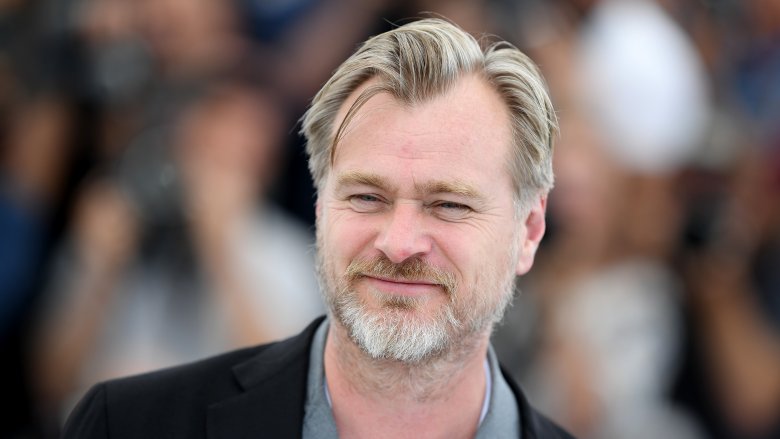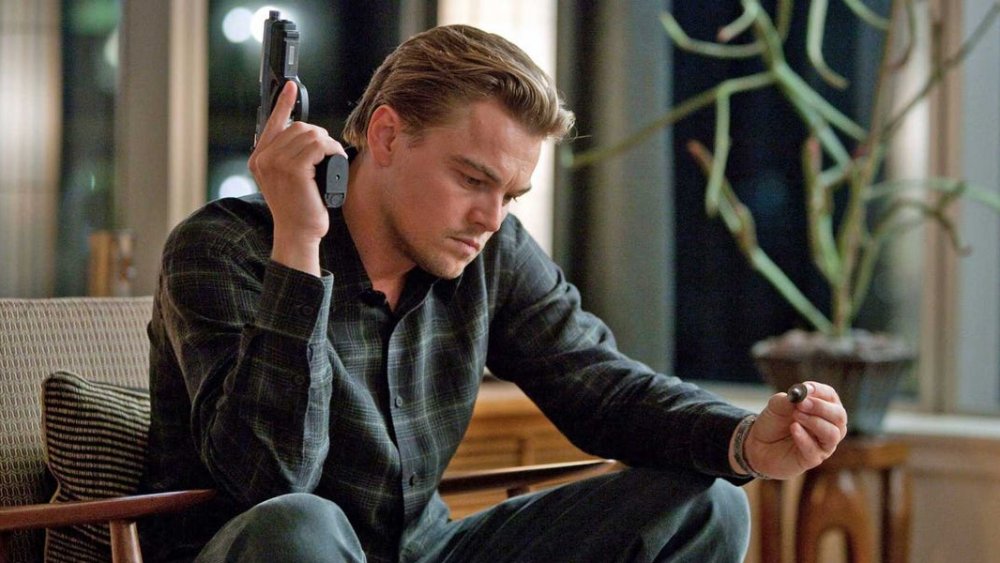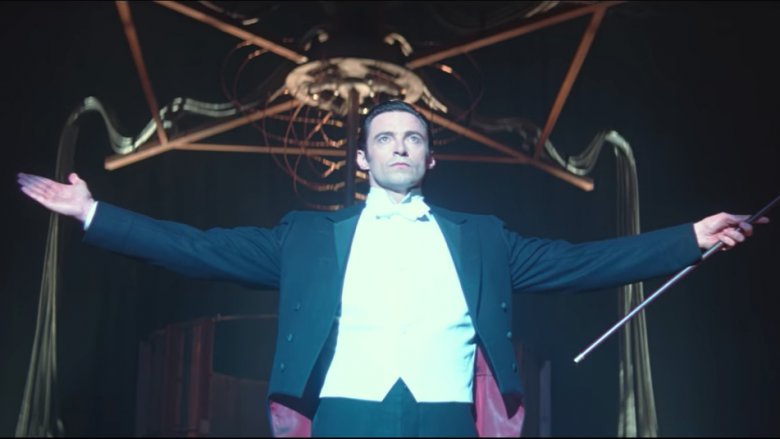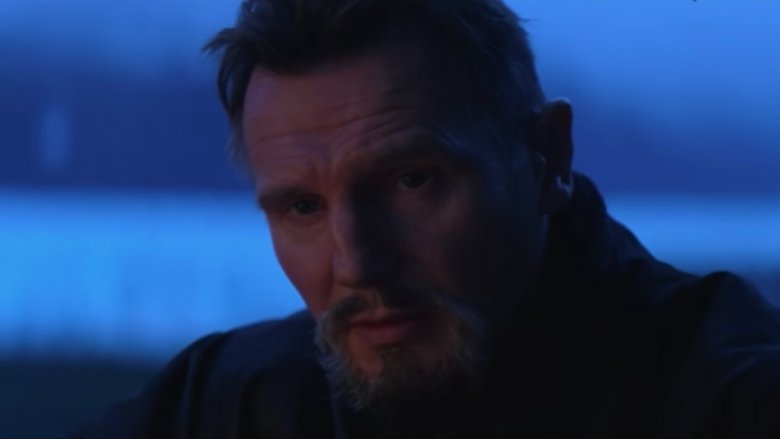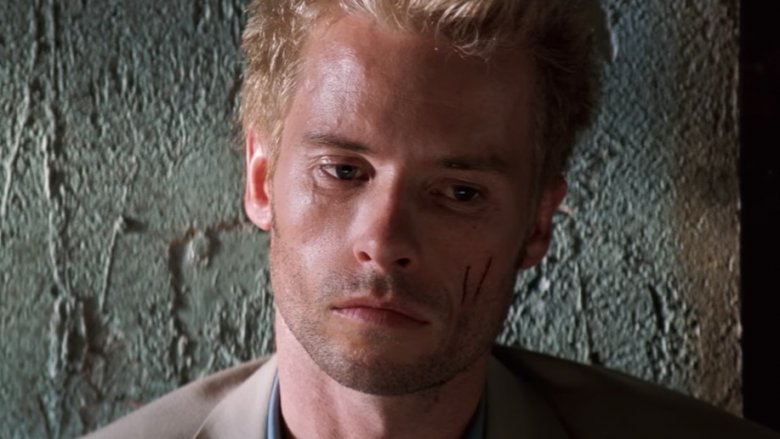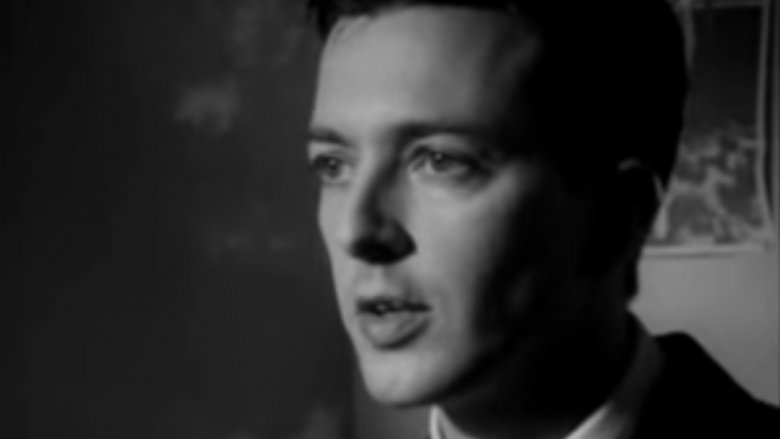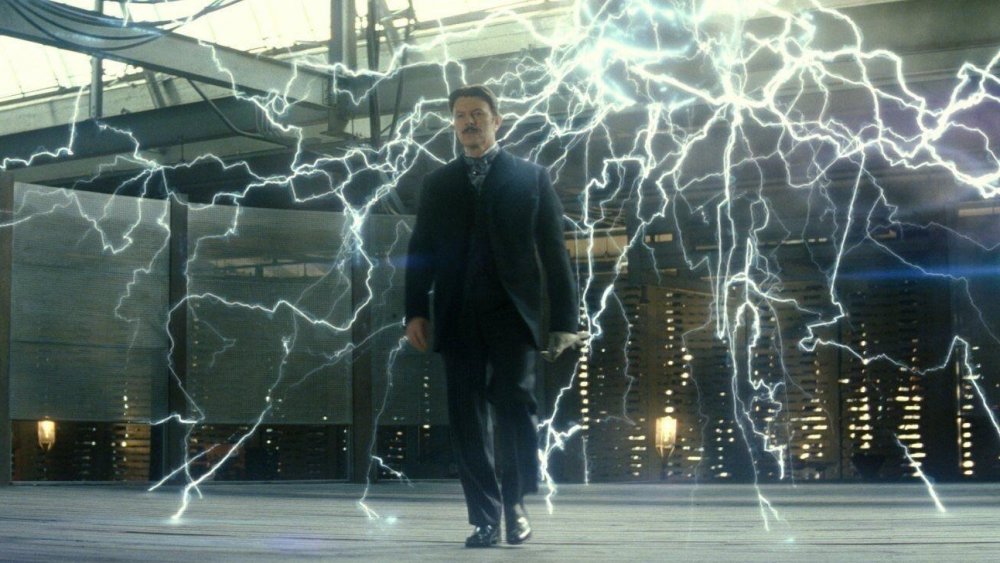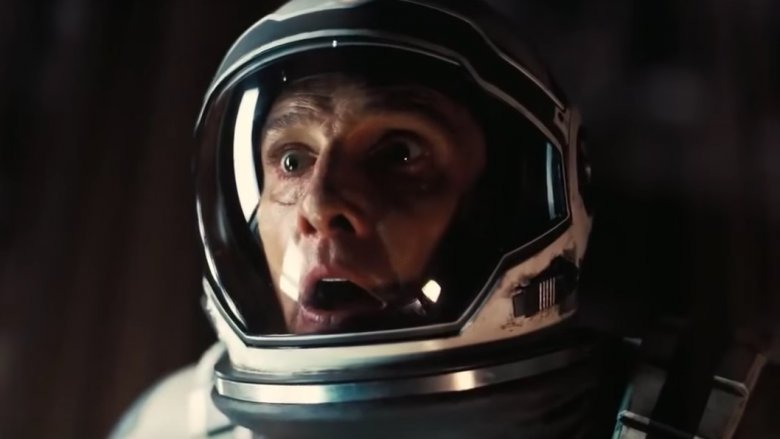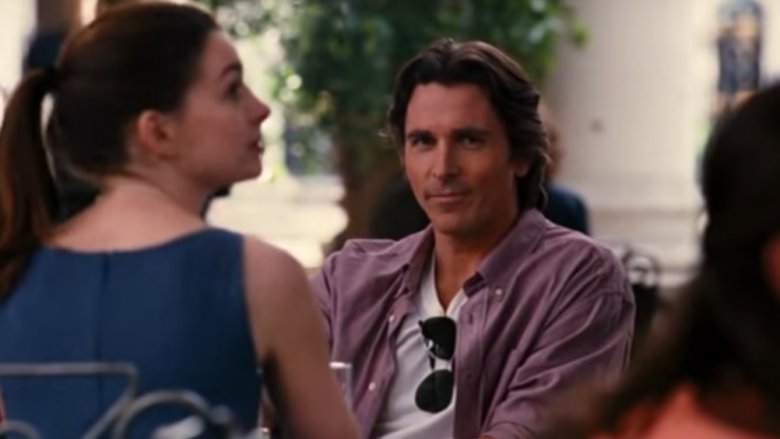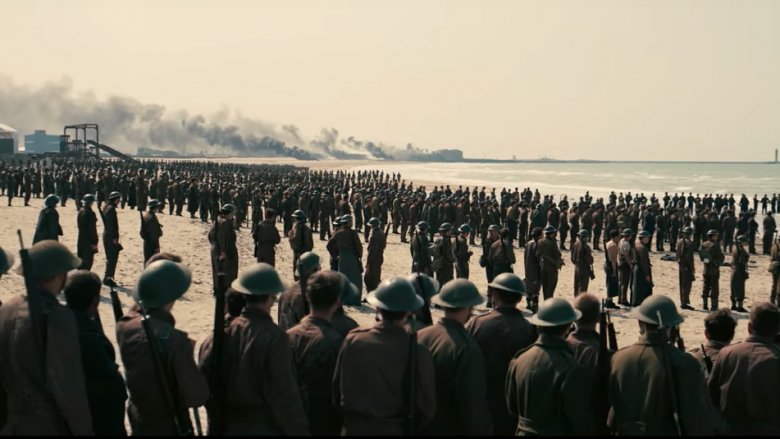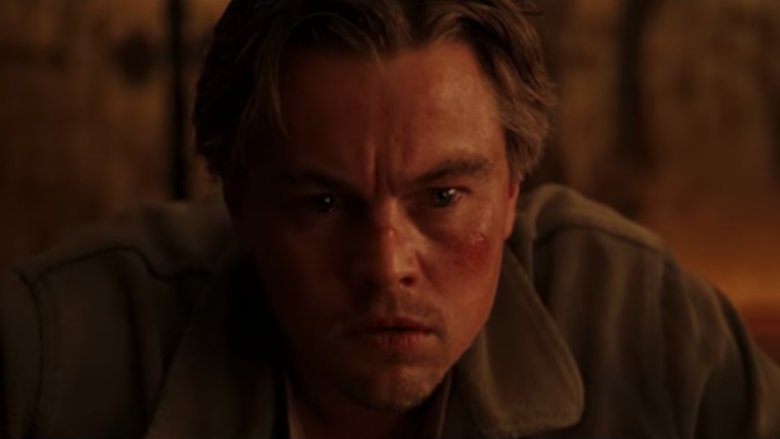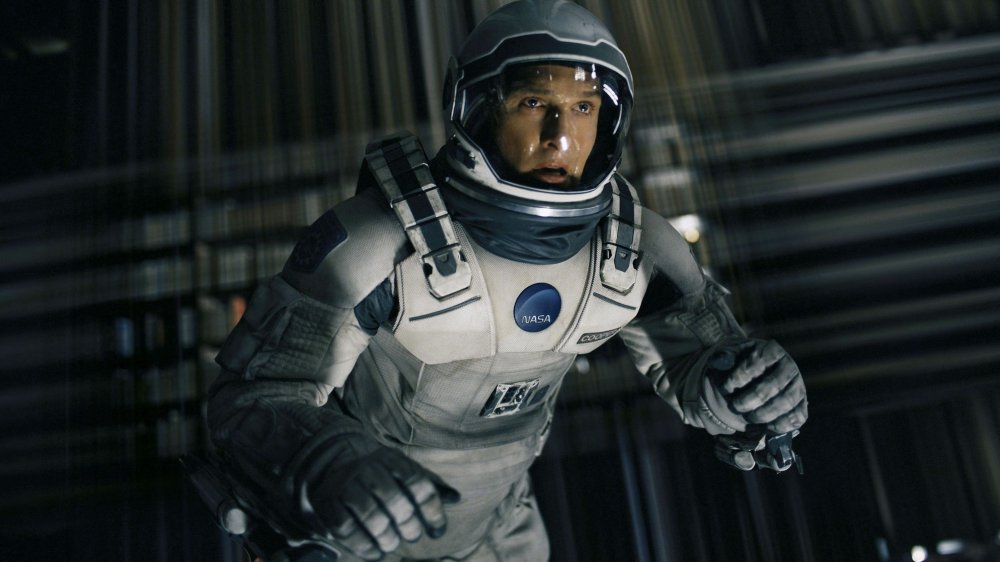The Most Confusing Christopher Nolan Movies Explained
Filmmakers like Christopher Nolan don't come around too often. The director has been enthralling and perplexing moviegoers for the better part of two decades now and shows no sign of slowing down. From making what is perhaps the greatest superhero movie of all time to redefining nonlinear storytelling in his era, the films of Nolan are often simultaneously simple and remarkably complex. They're all rooted in basic human emotions and universal themes that are tremendously easy to comprehend. What's more, characters in Nolan's films often have incredibly simple goals and motivations. Save the human race from destruction. Be the greatest magician to ever live. Catch the man who helped kill your wife.
It's not the characters in Nolan's films that are complicated but the techniques he uses to tell their stories. From dense plot twists to nonlinear storytelling and unreliable narrators, Nolan's filmography is littered with confusing moments, arcs, and endings. And of course, there are spoilers ahead because we're here to explain the most confusing moments in Christopher Nolan films.
Inception's ending spins you around
In a filmography made up of some of the most famous endings and plot twists of all time, there is perhaps none more famous than the closing moments of Inception. The film features heists that are carried out in dreams, usually inside other dreams. To help distinguish dream from reality, each character in protagonist Cobb's crew carries a totem. The most famous is the spinning top Cobb (Leonardo DiCaprio) carries with him at all times. If he spins the top and it collapses, he's in the real world. If it never stops, it's a dream. The film's ending sees Cobb reunited with his family. He spins the top but instead of waiting for the result, he rushes to see his children. The top spins, and wobbles a tiny bit, but the film cuts to black before it falls.
Until that moment we have every reason to believe Cobb is back in reality. So what's actually going on? Despite the fact that Nolan himself won't answer definitively, there are context clues that point to Cobb being in reality. The best evidence is the presence of his children. Throughout the film we're shown that Cobb can't remember their faces. In the ending, he can see them. It's enough to sway us to say it's real. In one way, whether it's real isn't the point. Perhaps the point is that Cobb walks away from the top. He's free.
How does the machine in The Prestige work?
The Prestige is a quiet gem in Christopher Nolan's catalog, a relentlessly compelling and layered examination of two dueling magicians and their obsession with their craft. In the film's second act, Angier (Hugh Jackman) becomes obsessed with replicating a trick performed by his rival, Borden (Christian Bale), called The Transported Man. In the trick, Borden seems to teleport himself from one location to another, and Angier is maddened that he can't figure out how he does it. He travels to America to meet with Nikola Tesla, who builds him a machine that allows Angier to perform the same trick. The machine works by creating an exact copy of the person who enters it and teleporting one of them a short distance away ... while the other is drowned in a tank underneath the stage. However, it's never specified whether the machine transports the original Angier to safety and drowns the clone or transports the clone and drowns Angier.
Not even Angier himself knows which outcome is true, which he admits in a brief line of dialogue in the film's closing. Since both versions of Angier believe themselves to be the "real" version, he has no way of knowing which is the original and which is the copy. It's why he believes that it takes courage to perform this version of the trick, since each time he enters the machine, it's just as likely that he'll be dropped into a tank as transported across the theater. Every time he steps onstage to perform his version of The Transported Man, he takes his life in his hands. By the end of The Prestige, he has no idea whether he's the original Angier or a copy of a copy of a copy — and neither do we.
Is Ra's al Ghul real in Batman Begins?
Nolan's Dark Knight Trilogy is anchored in a unilateral theme: the idea of a man as a symbol and the relationship between the two. The symbol in this case is Batman and the man behind it Bruce Wayne (Christian Bale). The exploration is present in Bruce's journey from orphaned child to legend, an avatar of hope and justice the people of Gotham cling to in their darkest hours. However, Bruce isn't the only man taking up a mantle bigger than himself. It's also done by one of his greatest enemies in Batman Begins: Ra's al Ghul. Or is it Ducard? Ra's is seemingly killed when Bruce escapes the League of Shadows in the film's first act, only for his old mentor Ducard (Liam Neeson) to resurface later claiming he's the mastermind and Ra's al Ghul is a smokescreen. So there is no Ra's al Ghul? Well, that's not exactly the case.
It's cemented in The Dark Knight Rises that Ducard is known as Ra's al Ghul throughout his life and operates as the leader of the League of Shadows. However, much like Batman, Ra's al Ghul is a symbol bigger than one man. Ducard himself notes that the League of Shadows has been active for centuries. It must always have a leader and that leader is Ra's al Ghul, an immortal symbol implicitly worn by many men throughout the ages. Ducard is Ra's al Ghul, but he's not the only Ra's al Ghul.
The end is the middle is the end in Memento
Nolan let viewers know what kind of filmmaker he was right off the bat with his 2000 film, Memento. The film centers on Leonard Shelby (Guy Pearce), a man who can't form new memories thanks to an injury sustained during an assault that left his wife dead. Since the assault, he's relied on notes and tattoos to keep track of the information he feels is important for him to "remember."
Memento depicts Leonard's hunt for the man responsible for his wife's death using a unique framing device, starting at the chronological end of the story, then gradually working its way backward. Each scene in the film chronologically precedes the one which plays out before it, so that the climax — which comes at the end of the film — actually occurs in the middle of Leonard's revenge story, while its beginning plays out only in flashback.
The nonlinear narrative can be hard to follow, but it's easier to grasp if you can mentally put the story back in chronological order. Leonard actually found his wife's killer and exacted his vengeance long before Memento's chronological starting point, but he quickly forgot it had happened. Afterward, Leonard's cohort, Teddy (Joe Pantoliano), began sending Leonard after a series of other men, each time convincing Leonard that his new target had murdered his wife. Upon discovering Teddy's deception, Leonard leaves himself clues that indicate that Teddy is the killer, and he eventually shoots him, just as he has all of his previous targets. Teddy's murder serves as the film's opening scene, while Leonard's motivation for killing him comes at the end of the film, completely upending our understanding of the story and drastically recoloring the character we've been following.
Following delivers the original Nolan twist
The seeds of the filmmaker Christopher Nolan becomes are present in his 1998 debut Following. It contains a multitude of common Nolan tropes, including a break from traditional chronological storytelling, noir influence, and twists that upend both the viewers' and the protagonist's understanding of what they've experienced. It also contains Nolan's first befuddling ending.
Following centers on a character credited only as The Young Man (at one point he calls himself Bill) obsessed with following people. He doesn't do so with malicious intent; he's just addicted to the act itself. Bill finds himself involved in a grander conspiracy when, after following him, he meets a burglar named Cobb. Throughout the film Bill accompanies Cobb on burglaries and becomes entwined in a plot involving a woman known as the Blonde (a classic femme fatale) and a criminal called the Bald Man. Things get out of hand after Bill ends up killing a man. When he turns himself in to the police the twist is revealed: Cobb has actually been working with the Bald Man and has been planting evidence throughout the film to set Bill up to take the rap for Cobb's murder of the Blonde. She, as it turns out, has been blackmailing the Bald Man, so Cobb kills her. Everything from the burglaries to Bill's alias (provided by Cobb) pins the murder of the Blonde on Bill. It's a classic noir twist with a bit of Nolan's personal touch to it.
Tesla's accidental magic in The Prestige
The Prestige, much like Memento, uses a combination of unreliable narrators and nonlinear storytelling to weave its twisting tale. The film's narration is provided by the journals of Borden and Angier, detailing their time as friends and eventual rivals. After stealing Borden's journal and reading that Tesla is the key to his Transported Man trick, Angier heads to America to work with Tesla (David Bowie) on what becomes the cloning machine. However, as the film reaches its finale, we find out that both diaries are frauds, written with the explicit intent of misleading each magician. It makes you wonder how Angier's collaboration with Tesla ended up being so fruitful if Borden simply intended to send Angier on a wild goose chase.
Ultimately, it turns out that Tesla's invention is an unintended wrinkle in Borden's plan. His intent was simply to send Angier overseas looking for something that wasn't there, wasting both his time and money in the process. He never anticipated that sending Angier to Tesla would actually result in Tesla inventing a machine that would literally create copies of Angier, enabling him to emulate his trick. However, beating Borden at his own game necessitates Angier's willingness to both kill and be killed every single time he performs his trick, begging the question of whether such a "victory" was worth the price he was forced to pay.
Cooper is the ghost in Interstellar
Nolan's 2014 film Interstellar is a sci-fi journey through space and time for the fate of the human race that incorporates real quantum physics and scientific theories into its logic. As your average moviegoer doesn't have a doctorate in quantum physics, many found the film confusing beyond belief, specifically the ghost in the film.
Early on, protagonist Cooper's young daughter, Murph (Mackenzie Foy), complains of a ghost haunting her room, throwing books around, and seeming to leave her messages. It's later discovered that it's not a ghost but a gravitational anomaly leaving messages that lead Cooper to a NASA base, setting his interstellar journey in motion. A full movie and a whole lot of quantum physics later, we get our answer as to what the ghost really is: It's Cooper (Matthew McConaughey). After entering a black hole, Cooper finds himself in a place where the dimension of time is made tangible so he can understand it. He's unable to travel through time while in the dimension but is able to use the only thing capable of bridging dimensions—gravity—to send the messages from earlier in the film, including the NASA coordinates that propel the entire journey into motion as well as the data that can save humanity from destruction. (He does this through Murph's watch in Morse code.) The gravitational anomalies aren't divine or alien. They're Murph's father reaching out across dimensional boundaries to save humanity.
Does Bruce survive in The Dark Knight Rises?
The Dark Knight Rises ends on a bold note: Bruce Wayne sacrifices his own life to save Gotham City, passing on the mantle of Batman to a new bearer. There's a funeral and everything — albeit no body to bury as Bruce dies in a massive nuclear explosion. However, there's a twist. Much as Alfred (Michael Caine) dreams about earlier in the film, Bruce and Catwoman (Anne Hathaway) end up in a European cafe some time afterward. Alfred notices him, and they smile and nod at each other but that's it. Since Bruce has died in a nuclear explosion and Alfred alludes to this exact vision at this exact cafe as a fantasy earlier, viewers must wonder whether this is real or just all in Alfred's head.
All signs point to this being real and Bruce having escaped death. Much of the evidence lies in the revelation that the Batplane's autopilot has been fixed by Bruce, who earlier implies that he has to fly it manually to get the bomb out of the city. He has no reason to lie about that, and there's no way he wouldn't know it had been fixed. Yes, escaping a nuclear blast is a pretty tall order, but he's Batman. Tall orders are kind of his whole thing. There's no definitive answer from Nolan, but even Batman actor Christian Bale believes that what we see in the film's closing moments is real.
Dunkirk's nonlinear structure
Nolan's 2017 war thriller Dunkirk makes the bold decision to depict true events in a nonlinear fashion. The real events took place over the course of a week, but Nolan uses a nonlinear series of intersecting stories to depict the events. With the story revolving around time running out, Nolan's nonlinear narrative maximizes its tension. Unfortunately, it frustrated some who had trouble following the chronology.
Dunkirk's three stories focus on characters experiencing the evacuation on land, in the air, and at sea. Figuring out the chronology and the ways the stories intersect throughout the film is easier if you have an understanding of when each story is beginning and the amount of time it spans. The story taking place on land, titled "The Mole," takes place over the course of one week of the evacuation. Another, titled "The Sea," takes place over the course of the last day of the Dunkirk evacuation. Finally, "The Air" takes place only over the course of an hour on the last day of the evacuation.
Understanding the linear chronology of Dunkirk makes it far easier to understand the events in the film as well as the powerful journey its characters experience. Nolan himself has said he structured it this way to better depict the experiences and perspective of the soldiers and citizens in each story segment.
Inception kicks off its finale
One of the more impressive aspects of Christopher Nolan's Inception is the efficiency with which it establishes the rules of its dream-sharing technology. However, some of the intricacies of the dream heist mechanics can get lost in the rapid-fire exposition, making some of the film's dreamtime twists a little hard to follow. One of the most potentially confusing mechanics are "kicks," or physical disruptions that wake people from dreams, which factor heavily into the movie's action-packed third act.
By this point in the film, Cobb and his team are three dream levels deep, meaning they're in a dream within a dream within a dream, and it will take a synchronized series of kicks in all three layers to jolt them out of it. In each level of the dream, time moves more slowly than in the level above, so that while hours pass in the third level, only seconds go by in the first. Because of this, the team coordinates the kicks by timing them to a song, which can be heard playing at varying speeds in each of the levels.
However, in the film's climax, Cobb decides to go even deeper into the dream to rescue a fallen team member, rather than riding the synchronized kicks back to wakefulness. So while the kicks work to rouse the other members of the team, Cobb is left behind to continue dreaming, having missed his kick. Instead, he has to wake himself up from deep within the dream, and although Inception never shows us precisely how he does this, it likely requires Cobb to create a kick of his own.
Who are 'They' in Interstellar?
One of the major overarching questions the characters had throughout most of Interstellar was about the mysterious beings — referred to in the movie only as "Them" — who created the wormhole that allowed humans to travel to the potentially inhabitable worlds of a distant galaxy. The wormhole was positioned near Saturn 48 years prior to the start of the film, but Amelia Brand (Anne Hathaway) and her father, John (Michael Caine), never consider that it might be naturally occurring. Rather, they assume that some other form of advanced intelligent life constructed the wormhole for altruistic reasons, allowing humanity a chance to survive following the slow destruction of Earth. Although they draw no conclusions about who "They" might be, the implication is that "They" are some form of extraterrestrial life who've taken a benevolent interest in humanity.
However, at the end of Interstellar, when Cooper finds himself inside a seemingly infinite tesseract that allows him to communicate with his daughter as a child, he realizes that he and the Brands have been wrong about "Them" for the whole movie. "They" aren't aliens at all. Instead, they're the humans of the future, people who've advanced far beyond the humans of the present. "They" have learned to transcend time using gravity, which is how they constructed the wormhole and how they allowed Cooper to send a message to his daughter (Jessica Chastain), who in turn uses the information she receives to save humanity. This creates a causal loop, in which humanity is saved by themselves in the future, who in turn only exist because they were saved in the past.
